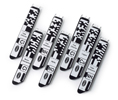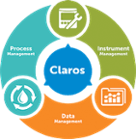-
Products
- Lab Instruments
-
Lab Meters and Probes
- Chemistries, Reagents, and Standards
-
Online Analyzers
Ammonium Analysers Ammonia Monochloramine Analyzers Chlorine Analyzers
- CL17sc
- CL10sc Amperometric
- Ultra Low Range CL17sc Colorimetric Chlorine Analyser
- RMC Disinfection Panel
EZ Series Analysers- Iron
- Aluminium
- Manganese
- Phosphate
- Chloride
- Cyanide
- Fluoride
- Sulphate
- Sulphide
- Arsenic
- Chromium
- Copper
- Nickel
- Zinc
- Ammonium
- Total Nitrogen
- Phenol
- Volatile Fatty Acids
- Alkalinity
- ATP
- Hardness
- Toxicity
- Sample Preconditioning
- Boron
- Colour
- Nitrate
- Nitrite
- Silica
- Hydrogen Peroxide
- EZ Series Reagents
- EZ Series Accessories
- EZ sc Series Inorganics
- EZ sc Series Metals
- EZ sc Series Nutrients
- Flow and Collections
-
Online Sensors and Controllers
Digital Controllers (Transmitters) Ammonium SensorspH & ORP Sensors
- 12mm pH/ORP
- 8362 sc High Purity
- Combination pH/ORP
- Differential pH
- Digital Differential ORP
- Digital Differential pH
- LCP ORP
- LCP pH
Conductivity Sensors- 3400 Analogue Contacting
- 3400 Digital Contacting
- 3700 Analogue Inductive
- 3700 Digital Inductive
- 9523 Cation Conductivity
- Samplers
- Claros Water Intelligence System
- Test Kits & Strips
-
Microbiology
Accessories and Chemicals Dehydrated MediaLabware
- Accessories
- Funnels, Pumps & Manifolds
- Microbiology Filters
- Petri Dishes & Accessories
- Sampling Bags
- Vials, Tubes, Bottles & Racks
-
Lab Equipment and Supply
Apparatus
- Brushes
- Clamps, Rings & Stands
- Crucibles
- Crucibles & Casseroles
- Dispensers & Droppers
- Grab Samplers
- Oil and Grease
- Other Apparatus
- Pipet Aids
- Pipettes
- Racks
- Stir Bars
- Tubing
- Weighing Accessories
General Lab Consumables Glassware/PlasticwareInstruments Safety Equipment - Industrial UV
- Electrochemistry
- Parameters
- Industries
- Support
- Service
- e-Shop
- Brands
Hach New Zealand
Choose your country or region:
Europe
Americas
Asia - Australasia
- Australia
- Mainland China
- India
- Indonesia
- Japan
- Malaysia
- New Zealand
- Philippines
- Singapore
- South Korea
- Thailand (Thai)
- Taiwan
- Vietnam
Middle East - Africa
Prices Online Include GST 0800 50 55 66
Other Disinfectants
Improve control of your disinfection process
The treatment processes for drinking water have changed during the last several years as increased concerns about disinfection byproducts (DBPs) and waterborne pathogens have become more prevalent. Many treatment processes now incorporate multiple oxidants or disinfectants to address these increased concerns. Other treatment objectives for these multiple oxidants include reducing taste and odor problems and facilitating the removal of dissolved metals.
Learn more about Ozone, chlorine dioxide and UV disinfection below.
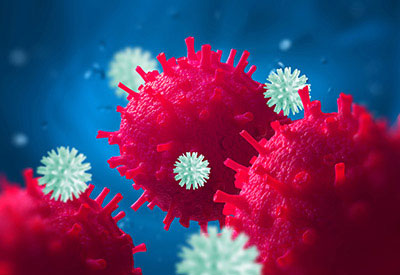
Ozone (O 3)
What is Ozone?
Ozone (O 3), a powerful oxidant, is being increasingly used for water disinfection, primarily preoxidation. It was first used in the Netherlands in the late 1800s to disinfect drinking water and is now used worldwide in drinking water and wastewater facilities, swimming pools, spas, and in the bottled water and beverage industries. The major reaction products are oxygen, water, and carbon dioxide. For environmental safety, unreacted or residual ozone, while unstable, should be monitored.

Why Ozone?
Ozone quickly provides microbial sterilization and disinfection, organic compound destruction, and conversion of iron or manganese salts to insoluble oxides which can be precipitated or filtered from the water. However, one of the problems with ozone is that if overfed, it converts those oxides into soluble form. This is why accurate monitoring is critical.

Chlorine Dioxide (ClO 2)
What is Chlorine Dioxide?
Chlorine dioxide is a deep yellow gas that is generated directly for onsite use as a bleaching agent in industrial processes, such as the manufacture of pulp and paper. It is used increasingly for special treatment objectives in municipal water treatment. Chlorine dioxide forms chlorite, a regulated byproduct, and chlorate.
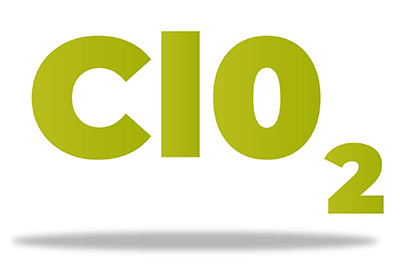
Why Chlorine Dioxide?
Unlike chlorine, chlorine dioxide does not form trihalomethanes (THMs) in reaction with certain organic compounds. Chlorine dioxide forms significantly fewer halogenated DBPs than free chlorine generates and doesn’t react with ammonia to form less active chloramines.

UV Disinfection
What is UV Disinfection?
UV rays can be an effective disinfectant in the water treatment process. It has been used in the commercial space for many years in the cosmetic, beverage, pharmaceutical, and electronics industries, particularly throughout Europe.
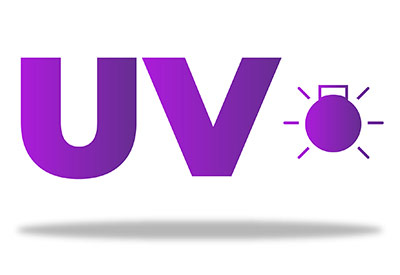
Why UV Disinfection?
Due to safety issues around chlorination and advancements in UV technology, UV is becoming increasingly accepted and utilized for water treatment in the U.S. UV light can disinfect water contaminated by bacteria and viruses and can fight protozoans such as Giardia lamblia cysts or Cryptosporidium oocysts.

Why test with other disinfectants?
With any disinfectant, accurate and responsive monitoring and control are critical to avoid negatively affecting the treatment process and finished water quality
With analytical testing, you can:
• Maintain the desired ozone levels
• Determine UV lamp dosage settings
• Optimize chlorine dioxide levels for treatment
Explore Methods and Parameters
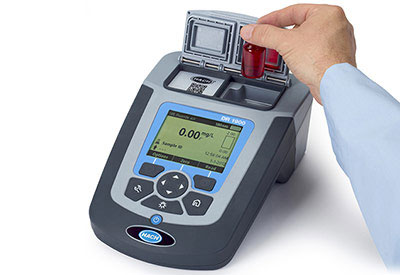
Additional Resources
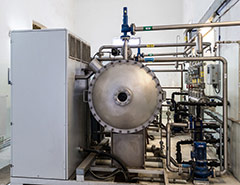
Learn about the Advantages of Ozone Treatment in Drinking Water
Ozone has been used for disinfection since 1906. Once considered inefficient and costly, the technology involved in ozone generation has improved making it a great solution for controlling biologic activity in water, tastes, odor and color issues.
LEARN MORE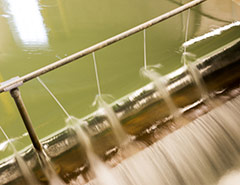
Chlorine Dioxide Requires Reliable Monitoring Protocols
Disinfecting drinking water with chlorine dioxide is becoming more common as utilities seek to reduce disinfection byproduct formation in finished water, but monitoring can be tricky. Learn why in this article
LEARN MORE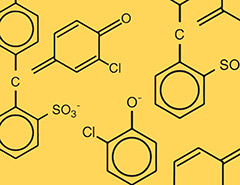
Chlorine Dioxide Chemistry Explained
Learn about the DPD and Chlorophenol Red Methods, the two primary methods for chlorine dioxide disinfection.
LEARN MORE
Which Options are Right for You?
Disinfection is a multifaceted process that involves a variety of factors, and every facility and operation is different. Whatever your needs, Hach is ready to help with information, technology, and support.
Explore the various parameters and methods associated with ozone, chlorine dioxide, and UV disinfectants below.
| Disinfectant |
| Preoxidation 1 | Post-disinfection 1 |
| Positive | Negative | Positive | Negative |
| Chlorine gas 2 | Strong, inexpensive |
High DBP, safety/ security issues |
Strong, inexpensive |
Taste and odor (T&O), DBP, safety issues |
| Monochloramine | Less DBP | Cost, process control |
Longer living, less DBP |
Nitrification, T&O |
| Chlorine Dioxide |
Kills giardia, oocyst, less DBP |
Cost, safety | Long living, active |
Chlorite/ chlorate, cost |
| Ozone | Strong, less DBP | Bromate, little residual, cost |
NA | No residual |
| Hydrogen Peroxide/PAA 3 |
Strong, easy to handle |
Bromate, no residual, cost |
NA | No residual |
| Permanganate | Strong, easy to handle |
MnO x (staining) |
NA | MnO x (staining) |
| UV | Strong, no DBP | Cost, no residual |
NA | No residual |
1 - Disinfectant activity comparison is based on CT values
2 - Hypochlorite is frequently used as an alternative in order to reduce risk of gaseous chlorine leaks and simplify the application
3 - Hydrogen peroxide is often used in mixture with peroxyacetic acid (PAA) to increase stability of the oxidizer
Explore the different types of parameters used in ozone, chlorine dioxide, and UV disinfection monitoring.
Why test for Ozone?
Test for ozone levels being delivered by the ozone generator. Maintain ozone levels to optimize the treatment process to reduce taste and odor problems, reduce disinfection byproduct formation, provide pathogen inactivation, and to facilitate removal of iron and manganese. Determine ozone concentrations to calculate CT credits.
Why test for Chlorine Dioxide?
Test for chlorine dioxide levels being delivered by the chlorine dioxide generator. Maintain chlorine dioxide levels to optimize the treatment process to reduce taste and odor problems, reduce disinfection byproduct formation, provide pathogen inactivation, and to facilitate removal of iron and manganese. Determine chlorine dioxide concentration to calculate CT credits for Giardia and virus inactivation.
What are Disinfection Byproducts (DBPs)?
Disinfection byproducts are formed when disinfectants, like chlorine, react with bromide and/or natural organic matter present in the source water. The EPA's established Stage I Disinfection Byproduct Rule regulates:
Total Trihalomethanes (TTHM): the sum concentration of four chemicals: chloroform, bromoform, bromodichloromethane, and dibromochloromethane. The EPA regulates TTHMs at an annual average concentration of 80 parts per billion
Haloacetic Acids (HAA5): the sum concentration of five chemicals: monochloroacetic acid, dichloroacetic acid, trichloroacetic acid, monobromoacetic acid, and dibromoacetic acid. The EPA regulates HAA5s at an annual average of 60 parts per billion.
Bromate: a chemical byproduct formed when ozone reacts with naturally occurring bromide. The EPA regulates bromate at an annual average of 10 parts per billion.
Chlorite: a byproduct formed when chlorine dioxide is used to disinfect water. The EPA regulates chlorite at a monthly average level of 1 part per million.
What is UV-254?
UV-254 or SAC 254 is a measure of the organic substances absorbing UV light at the 254 nm wavelength. This measurement has shown to be a good indicator of the amount of organic material present that is likely to react with chlorine to form disinfection byproducts (DBPs). The method uses no reagents and requires an instrument capable of measuring light absorbance at 254 nm. The method is best used with surface waters like large reservoirs or lakes that have a relatively stable organic level. A change in the UV-254 absorbance value can indicate changes in water quality that may impact the disinfection process. Storm events, algal blooms, or reservoir turnover would be examples of events that could impact the UV-254 value and the subsequent treatment process. The UV-254 measurement is made by following sample filtration through a 0.45 micron filter. The UV-254 value is also used in the calculation of SUVA (specific UV absorbance) which is used to determine compliance for reducing DBP precursor material under the Disinfectants and Disinfection Byproduct Rules.
Why test for Permanganate?
The main goal of water treatment with sodium permanganate or potassium permanganate is to provide adequate preoxidation to remove organics and/or dissolved metals, such as manganese (Mn) and iron (Fe), from the water. Natural organic matter (NOM) removal is usually the primary goal for surface water treatment to minimize formation of disinfection byproducts (DBPs). Removal of metals by oxidation is usually the primary goal for ground water treatment; however, the general practice is to sequentially remove metals by precipitation and filtration.
Operational challenges usually come to determining and maintaining the correct feed of permanganate. The balancing act is between underfeeding permanganate and therefore not achieving the goal of NOM and/or metals removal and overfeeding that may lead to an unwanted pink color in finished water. In addition, over-oxidizing of Mn leads to its dissolution and therefore defeats the purpose of the treatment (inefficient filtration). To maintain such a delicate balance, the analysis of treated water must be constantly conducted in process and therefore online instrumentation is preferred for such applications. Instrumentation should provide accurate results and be robust.
Find the right testing solution
Select the attributes below to find the right disinfectant product for you.
Compare our different products used for various applications by exploring the resources and options below.





 Recurring Orders
Recurring Orders 
